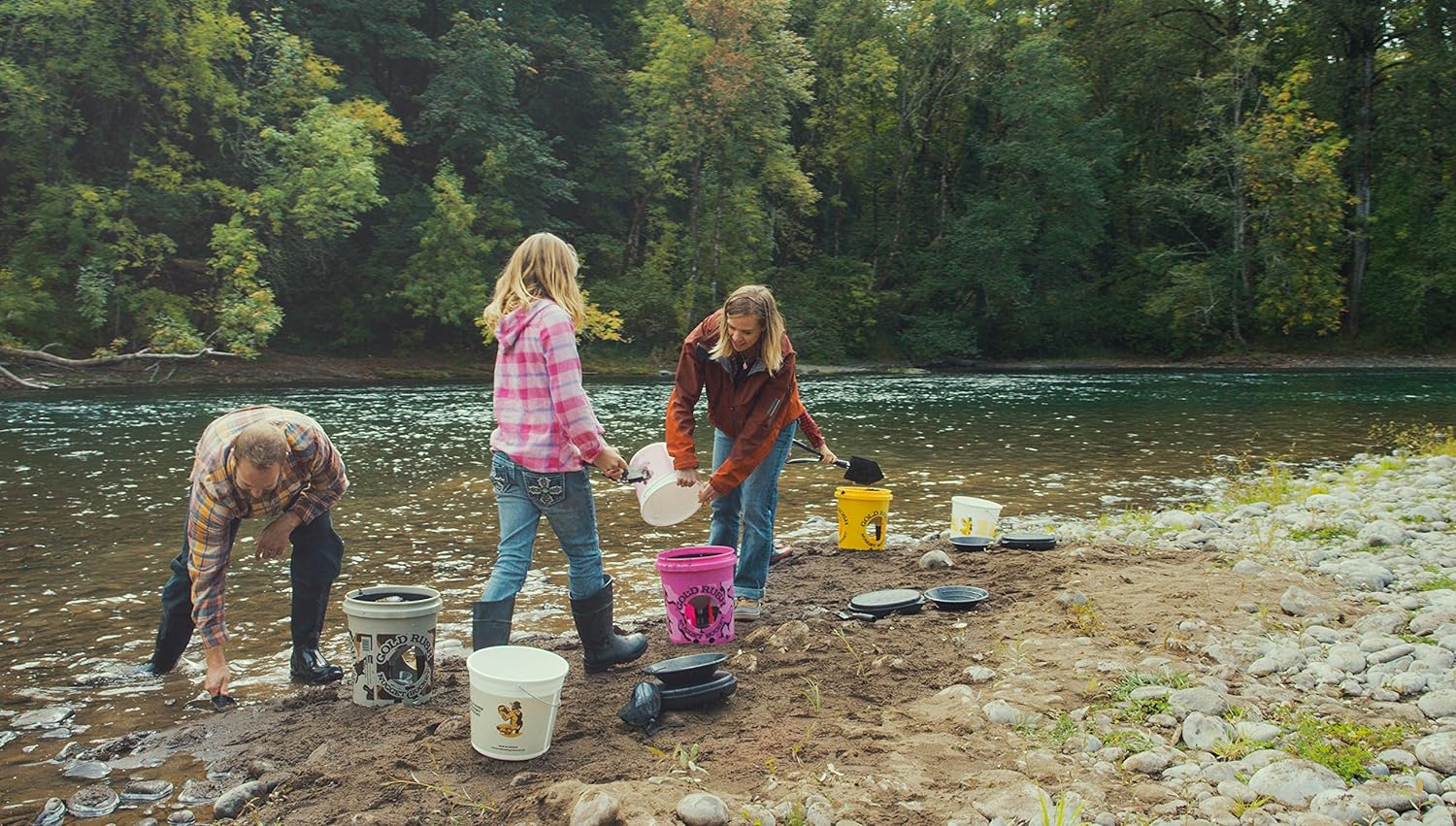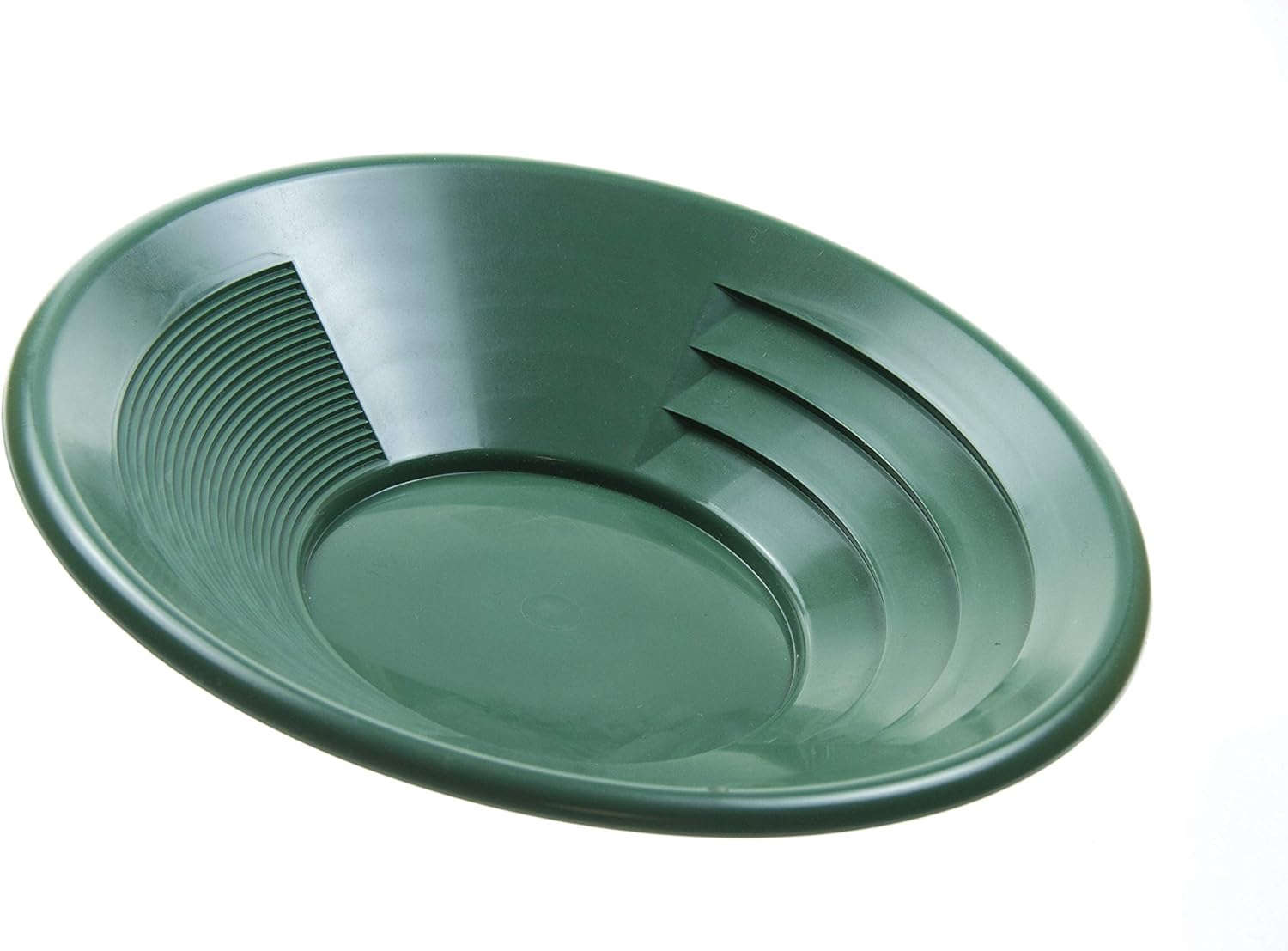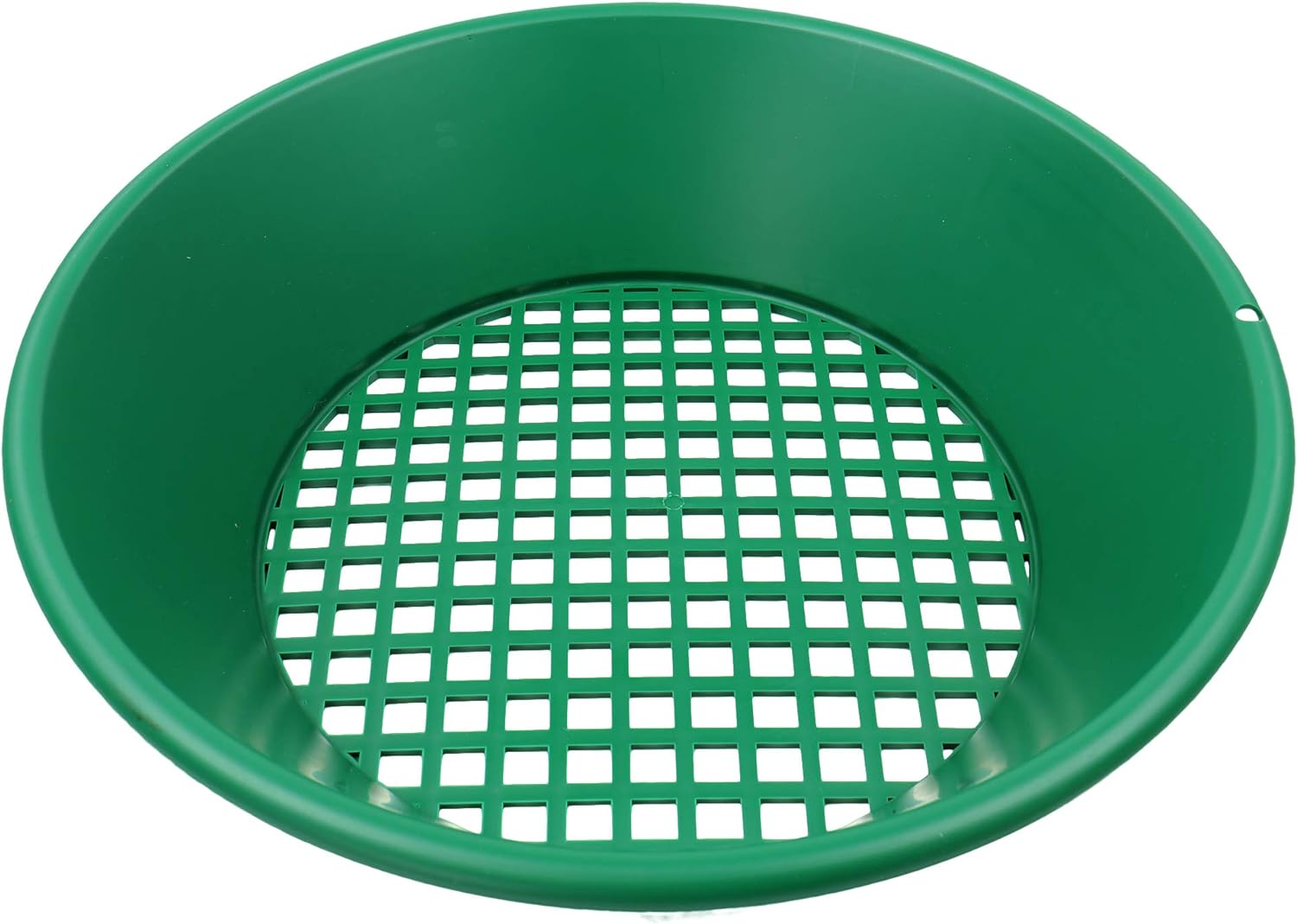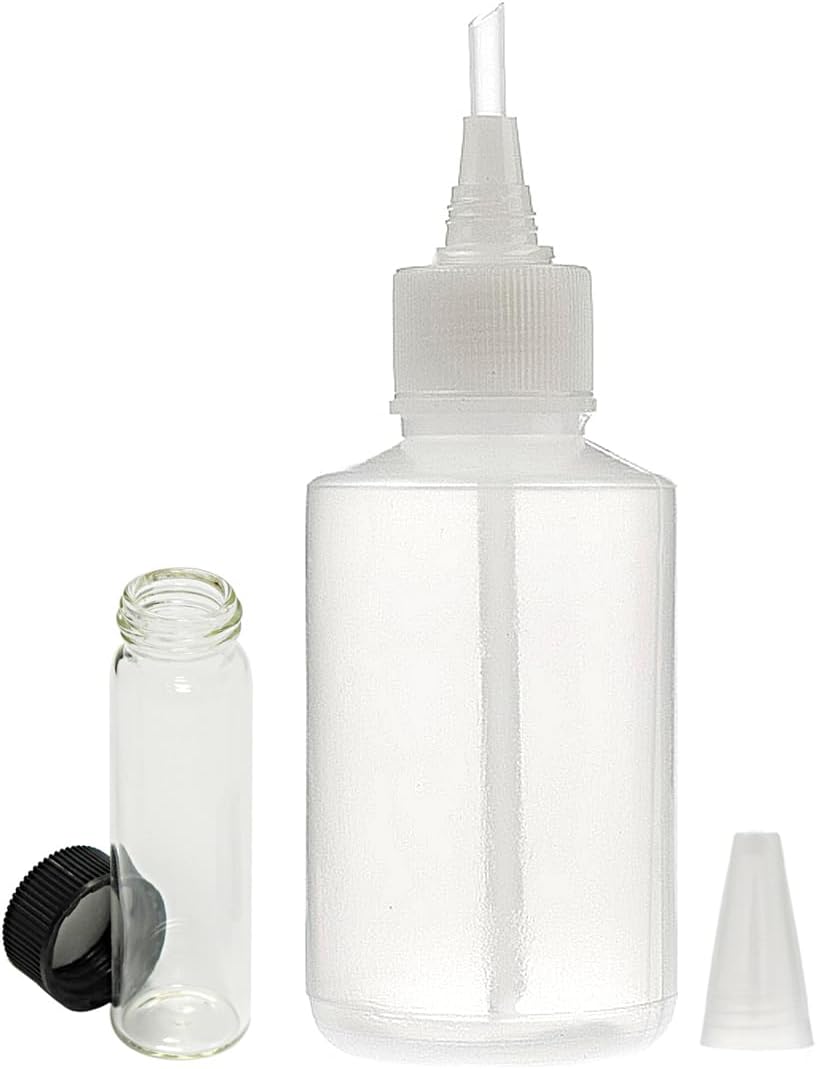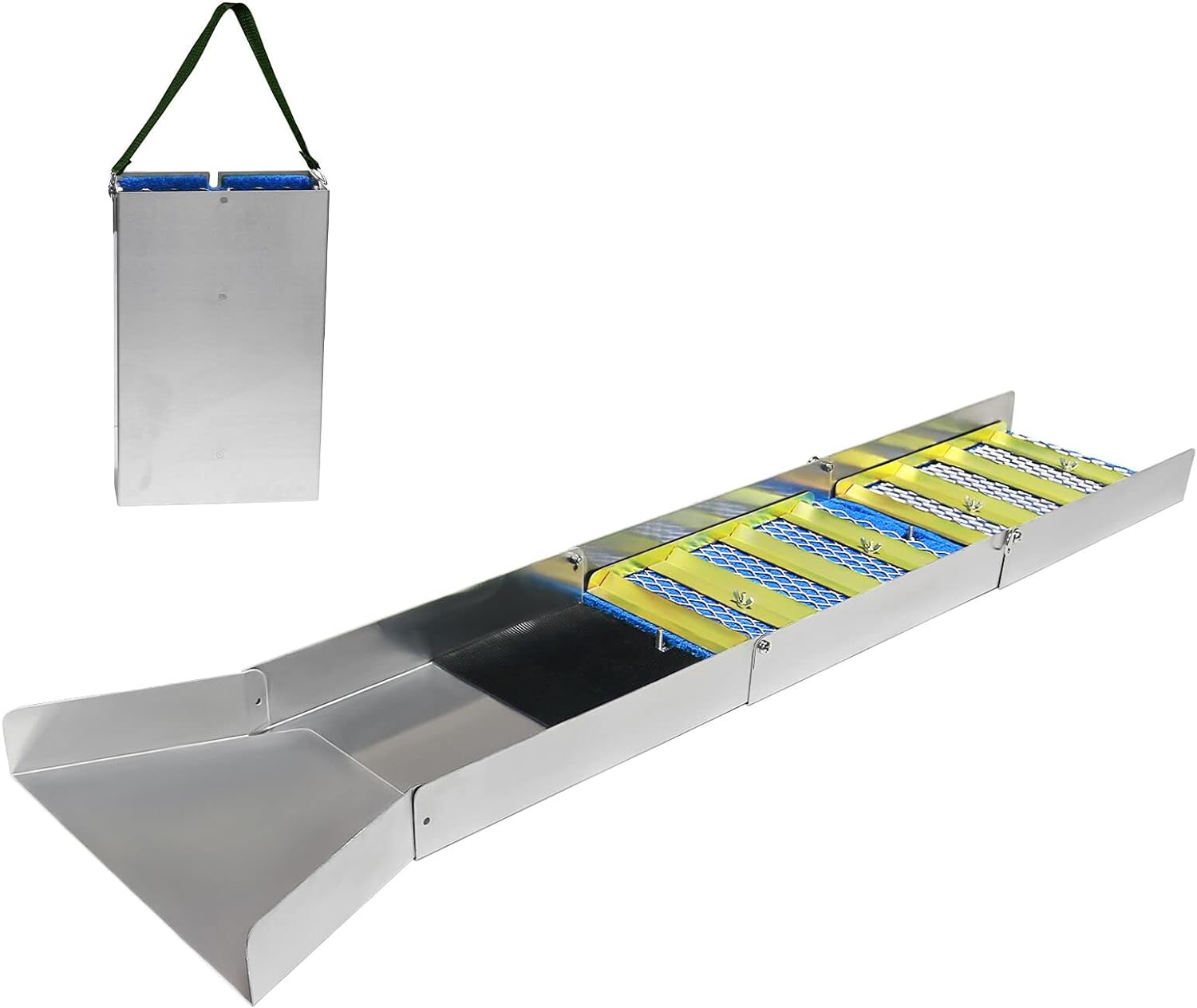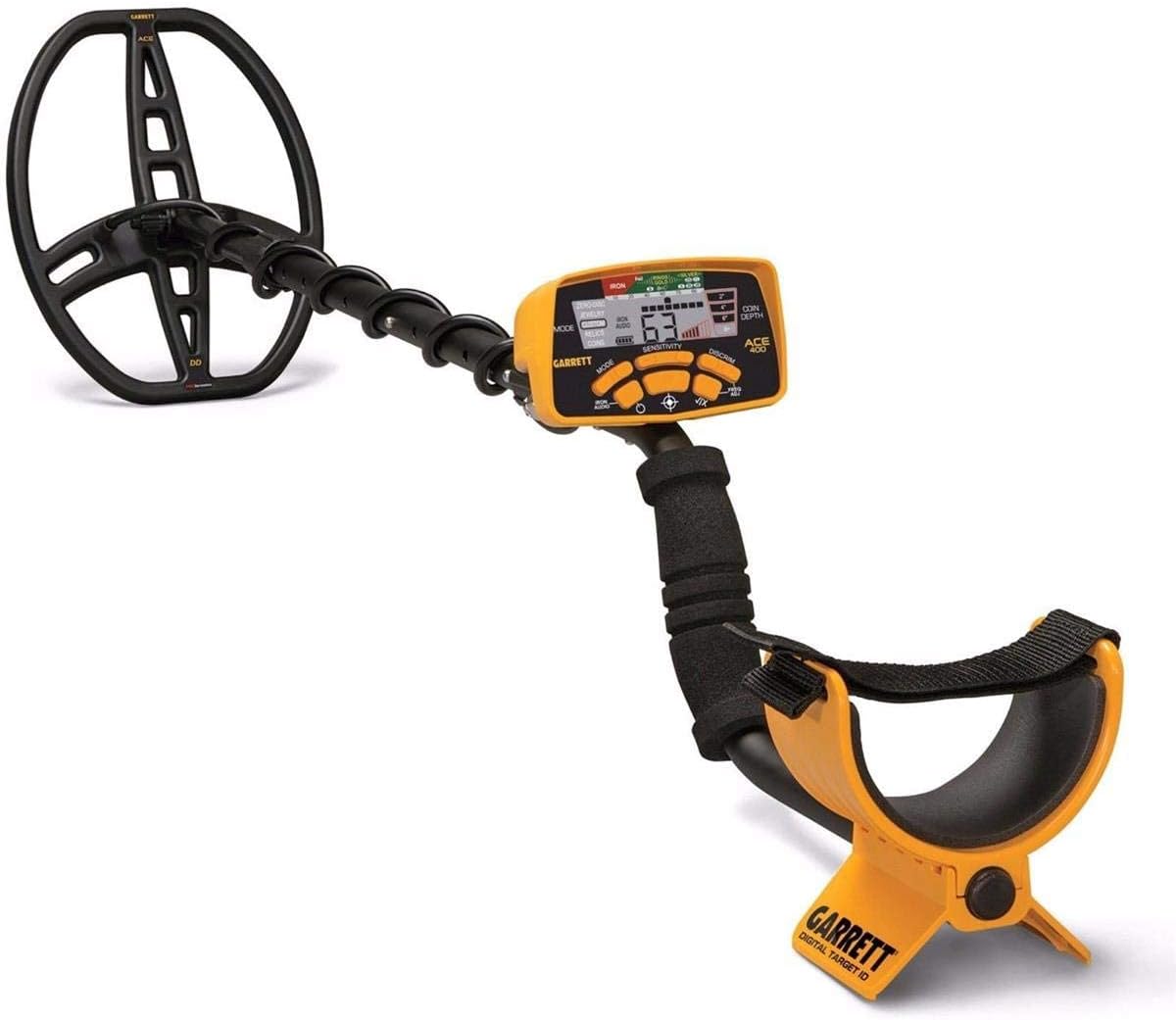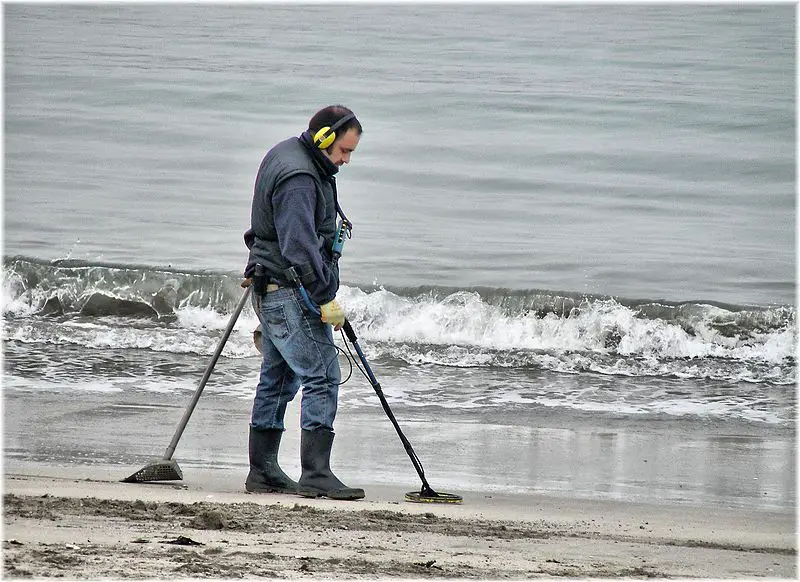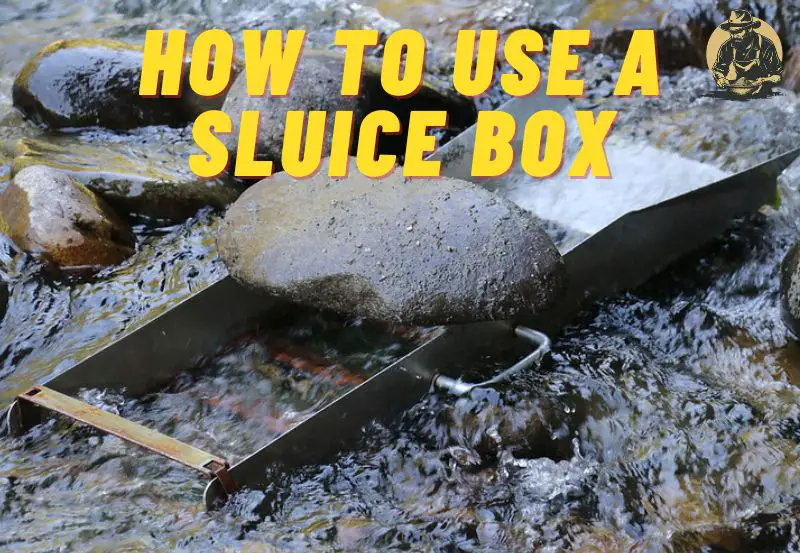Are you a beginner gold prospector looking to embark on an exciting adventure in search of the precious metal? Well, look no further! In this comprehensive guide, we’ll explore the gold prospecting equipment for beginners and tools you’ll need for your golden venture. From the reliable gold pan and sieve-like classifier to the indispensable snuffer bottle and tweezers, we’ve got you covered. And if you’re ready to upgrade your game, we’ll even touch on the benefits of a sluice box and a metal detector. So, pack your bags, grab your gear, and get ready to embark on a thrilling gold prospecting journey. Happy hunting, fellow adventurers!
Gold Pan Gold Prospecting Equipment for Beginners
Description of a gold pan
A gold pan is a fundamental gold prospecting equipment for beginners for any aspiring gold prospector. It is a shallow, circular, and wide-bottomed dish usually made of metal or plastic. The pan is designed to allow the heavier gold to sink to the bottom while the lighter materials are washed away. The shape of the pan and the presence of riffles or grooves on its surface help to trap and concentrate the gold.
Features to look for in a gold pan
When choosing a gold pan, there are a few key features to consider. First and foremost, the material of the pan should be durable and resistant to wear and tear. Metal pans are preferred by many experienced prospectors for their longevity and ability to withstand rough conditions. However, plastic pans can also be a good option for beginners due to their lighter weight and ease of use.
The size of the pan is another important factor to consider. A 14-inch pan is a popular choice for beginners as it provides enough surface area to effectively capture gold without being too cumbersome to handle. Additionally, look for pans that have riffles or grooves on the surface. These ridges help to trap the gold, making it easier to separate from the rest of the material.
How to use a gold pan
Using a gold pan is relatively simple, but it does require some technique and practice to master. Start by scooping up some gravel and sediment from a potential gold-bearing area into the pan. Submerge the pan in water and agitate it in a circular motion. This action helps to wash away the lighter materials and concentrate the heavy gold particles at the bottom.
Next, hold the pan at a slight angle and continue swirling the water and sediment. As you do this, carefully tilt the pan forward and backward, allowing the water to flow over the edge while keeping the heavier gold trapped in the pan. Gradually, the lighter materials will be washed away, leaving only the gold behind.
To retrieve the gold from the pan, gently tip the pan forward and let the water flow out while keeping the gold trapped with your fingertips. Be careful not to lose any gold during this process. You can also use a snuffer bottle or tweezers to extract the gold from the pan more precisely.
Remember, gold panning is a skill that improves with practice. Don’t get discouraged if you don’t find gold right away. Keep exploring different locations and refining your technique, and you’ll increase your chances of success.
Classifier Gold Prospecting Equipment for Beginners
Purpose of a classifier
A classifier is a valuable gold prospecting equipment for beginners tool for any gold prospector as it helps to separate larger rocks and debris from the smaller, gold-bearing material. The purpose of using a classifier is to save time and effort by allowing you to focus on processing the material that is most likely to contain gold.
Types of classifiers
There are several types of classifiers available, but the most common ones are sieve-like devices made of metal or plastic. These classifiers consist of a series of screens or mesh with different-sized holes. As you pour the material onto the classifier, the larger rocks and debris are caught on the top screen, while the smaller, gold-bearing material passes through and collects in the lower screens.
How to use a classifier
Using a classifier is a straightforward process. Begin by placing the classifier over your gold pan or bucket. Then, pour the material you want to classify onto the top screen. Gently shake or agitate the classifier to allow the smaller material to pass through the holes, while the larger rocks and debris remain on the top screen.
Continue this process until all the material has been classified. Once you have separated the larger rocks and debris, you can dispose of them and focus on processing the smaller, gold-bearing material. This saves you time and effort by eliminating unnecessary processing of material that is unlikely to contain gold.
Remember to clean your classifier after each use to ensure optimal performance. Removing any stuck material or debris from the screens will help maintain the efficiency of the classifier and ensure accurate classification of the material.
Shovel and Pickaxe Gold Prospecting Equipment for Beginners
Types of shovels and pickaxes
When it comes to choosing a shovel and pickaxe for gold prospecting, consider the type of terrain you’ll be working in and the materials you’ll be digging. There are various types of shovels and pickaxes available, each designed for different purposes.
For shovels, a general-purpose shovel with a square or rounded blade is a good option for most prospecting activities. This type of shovel is versatile and can be used for digging, moving dirt, and breaking apart small rocks or clay deposits.
If you’re prospecting in rocky or hard-packed soil, a pickaxe or pick mattock can be a useful tool. This tool features a pointed end for breaking apart tough ground and a flat end for prying rocks.
Considerations for choosing a shovel and pickaxe When selecting a shovel and pickaxe, consider the weight and length of the tools. Lightweight options are preferable if you’ll be carrying your equipment over long distances or hiking to remote prospecting sites. Look for shovels and pickaxes with durable handles, preferably made of fiberglass or reinforced with metal, to withstand the rigors of prospecting.
Additionally, some shovels and pickaxes have collapsible or retractable handles, making them more portable and easier to store. This can be a great option if storage space is limited or if you’ll be traveling frequently.
Proper use of a shovel and pickaxe When using a shovel, remember to use your legs rather than your back to lift and move dirt. Bend your knees and keep your back straight to avoid strain or injury. When breaking apart rocks, use the pickaxe with controlled and deliberate strikes, focusing your energy on specific points to maximize effectiveness.
Always be aware of your surroundings and use caution when using these tools. Avoid swinging the pickaxe too forcefully, as it can ricochet off hard surfaces and cause injury. Take breaks as needed and stay hydrated to prevent fatigue.
By choosing the right shovel and pickaxe and using them properly, you’ll be equipped to tackle various prospecting environments and efficiently collect the material for processing.
Snuffer Bottle Gold Prospecting Equipment for Beginners
Function of a snuffer bottle
A snuffer bottle, also known as a “sucker bottle,” is a handy tool for gold prospecting. Its primary function is to suck up small gold flakes and particles that have been separated from the rest of the material during panning. The snuffer bottle allows for more precise collection of gold and prevents the loss of valuable material.
Choosing the right snuffer bottle
When selecting a snuffer bottle, consider the size, shape, and material. A snuffer bottle with a narrow tip and a flexible tube is ideal for precise gold collection. Look for a bottle with a capacity that suits your needs. Some snuffer bottles have a built-in valve or control mechanism to prevent accidental spills or leaks.
As for the material, plastic snuffer bottles are lightweight and affordable, making them a popular choice for beginners. However, if you prefer durability and a longer lifespan, consider a snuffer bottle made of metal.
Techniques for using a snuffer bottle
Using a snuffer bottle is a straightforward process. Start by submerging the bottle in water, allowing the tip to fill with water. Then, direct the tube near the gold flakes or particles you want to collect. Gently squeeze the bottle to create suction, and the water will flow out, sucking up the gold into the bottle.
Carefully remove the snuffer bottle from the water and let the excess water drain out. You can then transfer the collected gold into a vial or any other container for safekeeping. Be cautious when transferring the gold to avoid spills or loss.
Practice using the snuffer bottle to develop your technique and maximize its efficiency. With time and experience, you’ll become more adept at using this tool to collect even the smallest gold particles.
Tweezers Gold Prospecting Equipment for Beginners
Role of tweezers in gold prospecting
Tweezers are a small but invaluable tool for gold prospecting. They allow for precise handling and extraction of small gold nuggets, flakes, or particles. Whether you’re panning or using a sluice box, tweezers come in handy when it’s time to separate and retrieve the gold from the other materials.
Different types of tweezers
There are various types of tweezers available, each designed for specific uses. The most common types of tweezers used in gold prospecting are pointed or fine-tipped tweezers and long-nose or curved tweezers.
Pointed or fine-tipped tweezers are excellent for picking up small gold particles due to their precision and grip. They allow you to carefully maneuver and position the tweezers around the gold, ensuring a secure hold.
Long-nose or curved tweezers are beneficial for reaching into tight spaces or hard-to-reach crevices. These tweezers provide extended reach and better visibility, especially when working with a sluice box or other equipment.
Choose tweezers that are made of high-quality materials, such as stainless steel, to ensure durability and resistance to corrosion. Additionally, consider the size and shape of the tweezers, as comfortable grip and ease of use are crucial factors.
Tips for using tweezers effectively
When using tweezers, it’s essential to exercise caution and precision. Avoid applying excessive force or pressure, as this can deform or damage the gold particles. Handle the tweezers gently and make deliberate, controlled movements.
As you collect gold with tweezers, have a container nearby to place the extracted gold. It’s advisable to use a small vial or bottle with a secure lid to prevent any accidental loss or spillage.
Clean and dry the tweezers after every use to remove any residual dirt or material that could affect their performance. Store them in a safe and dry place to maintain their condition and prevent damage.
With practice, you’ll become proficient in using tweezers to handle and retrieve gold effectively. They are a valuable addition to your toolkit and can make a significant difference in your gold prospecting success.
Sluice Box Gold Prospecting Equipment for Beginners
Introduction to sluice boxes
A sluice box is a versatile and efficient piece of equipment used for gold prospecting. It is essentially a long, narrow channel or trough with riffles or ridges along the bottom. The sluice box is designed to use the flow of water to separate gold from other materials and concentrate it in the riffles.
Types of sluice boxes
There are various types and designs of sluice boxes available, each with its own advantages and specific applications. The most common types include regular sluice boxes, highbanker sluice boxes, and recirculating sluice boxes.
Regular sluice boxes are the traditional and simplest design. They consist of a long, narrow channel with riffles and rely on the natural flow of water to create the necessary separation and concentration of gold.
Highbanker sluice boxes, also known as power sluices, incorporate a water pump and spray bars to increase the water flow and efficiency. These are advantageous in areas with limited water supply or when processing larger volumes of material.
Recirculating sluice boxes utilize a pump and water reservoir to recirculate the water and create a continuous flow. This design reduces the need for a constant water source and allows for prolonged gold prospecting.
How to set up and use a sluice box
Setting up a sluice box involves several steps. Begin by selecting a suitable location in a gold-bearing stream or river. The ideal spot should have a consistent flow of water and be accessible for setup and operation.
Clear any debris or obstacles from the area where you intend to place the sluice box. Make sure there is sufficient space for the water to flow and the material to be processed. The sluice box should be positioned at a slight angle, allowing the water to flow down the channel.
Once the sluice box is in place, secure it firmly to prevent movement or displacement. Adjust the angle of the sluice box to ensure optimal flow and allow for efficient separation of gold from other materials.
Before starting the operation, remove any large rocks or debris from the material you’ll be processing. Feed the material into the sluice box while maintaining a controlled and consistent flow. Observe the behavior of the material and make any necessary adjustments to the water flow or angle of the sluice box to optimize the separation and capture of gold.
Regularly clean out the riffles and remove any debris or build-up to prevent clogging and ensure uninterrupted operation. Monitor the progress of the gold collection and periodically check for any losses or spillage.
Using a sluice box effectively requires practice and understanding of the principles behind its operation. Experiment with different settings and techniques to find the most effective approach for your specific prospecting conditions.
Metal Detector Gold Prospecting Equipment for Beginners
Importance of a metal detector in gold prospecting
A metal detector is a valuable tool for gold prospecting, especially when searching for gold nuggets or smaller gold deposits. It is designed to detect and locate metal objects, including gold, buried beneath the surface. Using a metal detector can significantly enhance your chances of finding gold deposits that may be missed by other methods.
Features to consider when buying a metal detector
When considering the purchase of a metal detector for gold prospecting, there are several key features to keep in mind.
First and foremost, choose a metal detector specifically designed for gold prospecting. These detectors are optimized to detect small gold nuggets and deposits at shallow depths. Look for models that operate at higher frequencies, as these are more suitable for detecting smaller gold particles.
Consider the sensitivity and depth capabilities of the metal detector. Higher sensitivity enables the detector to pick up weaker or smaller signals, increasing your chances of finding gold. Depth capabilities refer to the maximum depth at which the detector can detect metal objects. Keep in mind that the depth may vary depending on soil conditions and the size of the target.
Another important feature to consider is discrimination. Discrimination allows the metal detector to differentiate between different types of metal objects. This feature can help you filter out unwanted materials, reducing false signals and allowing you to focus on gold targets.
Comfort and ease of use are also important factors. Look for metal detectors that have adjustable shafts and ergonomic grips to ensure a comfortable and secure hold. Additionally, consider the weight of the detector, especially if you’ll be prospecting for extended periods.
Techniques for using a metal detector effectively
Using a metal detector effectively requires practice and understanding of its capabilities. Start by familiarizing yourself with the controls and settings of the detector. Adjust the sensitivity, discrimination, and other parameters based on the specific conditions and your preferences.
When prospecting with a metal detector, move slowly and methodically. Sweep the coil of the detector over the ground in a controlled and overlapping pattern. Listen for the audio signals produced by the detector and pay attention to any changes or variations. Different types of signals can indicate the presence of different metals, including gold.
If the metal detector detects a target, use a small handheld shovel, trowel, or pinpointer to carefully dig and retrieve the object. Ensure that you fill any holes or disturbances you make to maintain the integrity of the prospecting area.
Practice your technique and familiarize yourself with the different signals and responses of the metal detector. By honing your skills, you’ll become more proficient in identifying and locating gold deposits, increasing your chances of success.
Patience, Observation, and Enjoying the Outdoors
The importance of patience in gold prospecting
Patience is a crucial virtue in gold prospecting. It’s essential to understand that finding gold requires time, effort, and perseverance. Don’t expect instant results or significant discoveries right away. Embrace the process and invest time in learning about the areas you’re prospecting.
Gold prospecting often involves repetitive and meticulous work, such as panning and classifying. It’s important to maintain a patient and focused mindset, as rushing or becoming frustrated can lead to mistakes or overlooking potential gold deposits.
Tips for observing your surroundings
Observation is a valuable skill for gold prospecting. Take the time to survey your surroundings and study the landscape, geology, and water flow patterns. Look for signs or indicators of potential gold-bearing areas, such as exposed bedrock, quartz veins, or areas where the soil or sediment has been disturbed.
Pay attention to the presence of other minerals or rocks that are commonly associated with gold. Familiarize yourself with the characteristics and visual cues that can help identify these indicators.
Additionally, observe the behavior of wildlife and plants in the area. Certain species of plants and animals can be indicative of a gold-rich environment. Learning to recognize these signs can enhance your ability to locate potential gold deposits.
The benefits of enjoying the outdoors while prospecting
Gold prospecting offers the unique opportunity to immerse yourself in nature and enjoy the great outdoors. Take the time to appreciate the beauty of the natural surroundings and the serenity of the wilderness. Embrace the adventure and the sense of exploration that comes with prospecting.
Spending time outdoors can have numerous physical and mental health benefits. It allows you to disconnect from the demands of daily life, reduce stress, and improve overall well-being. Whether you’re prospecting alone or with friends and family, the experience can foster a sense of camaraderie and create lasting memories.
Remember to follow any regulations or guidelines in place for the prospecting area, including obtaining the necessary permits or permissions. Respect the environment and leave no trace of your presence to ensure the preservation of these valuable natural resources for future generations.
Specialized Tools
Explanation of specialized tools for advanced prospecting
Specialized tools are designed for specific tasks or advanced prospecting techniques. As a beginner, it’s important to develop your skills and gain experience with the basic equipment before investing in specialized tools. However, it’s useful to be aware of these tools for future reference and as your prospecting journey progresses.
Some examples of specialized tools include gold dredges, dry washers, and metal detectors with advanced features. Gold dredges are large devices that suction material from riverbeds or stream banks, allowing for efficient collection of gold-bearing material.
Dry washers are designed to process dry or arid soils by separating the gold from the lighter materials using air and vibration. These tools are particularly useful in desert or dry regions where water is scarce.
Advanced metal detectors may offer additional features, such as multiple operating frequencies, advanced discrimination settings, or specialized search coils. These features can enhance your ability to detect gold deposits in various conditions or increase your chances of finding smaller gold particles.
When and how to use specialized tools
The decision to use specialized tools depends on various factors, including your experience level, the specific prospecting environment, and the type of gold deposits you’re targeting. Specialized tools are often used in more challenging or specific prospecting scenarios, such as deep bedrock crevices, large-scale operations, or areas with limited water supply.
Before using specialized tools, it’s important to thoroughly understand their operation and safety considerations. Familiarize yourself with the manufacturer’s instructions, recommended techniques, and any necessary permits or regulations. Additionally, consider seeking guidance or advice from experienced prospectors or joining local prospecting clubs or organizations.
Specialized tools can enhance your prospecting capabilities and open up new opportunities for finding gold. However, it’s essential to approach their use with caution and ensure that you have the necessary skills and knowledge to utilize them effectively.
Conclusion
Summary of essential equipment for beginners
As a beginner in gold prospecting, it’s important to start with the right equipment to set yourself up for success. The essential equipment includes a gold pan, classifier, shovel, pickaxe, snuffer bottle, tweezers, sluice box, and metal detector. These tools will allow you to explore, collect, and process the material effectively, increasing your chances of finding gold.
Encouragement for beginners to start their gold prospecting journey
Embarking on a gold prospecting journey can be an exciting and fulfilling experience. As a beginner, it’s essential to embrace the learning process, be patient, and stay motivated. Remember that finding gold takes time and effort, and success may not come immediately. Utilize the resources available, such as books, online forums, and local prospecting clubs, to expand your knowledge and connect with experienced prospectors.
Closing thoughts on the joy of prospecting
Gold prospecting is more than just searching for precious metal; it’s a journey that allows you to connect with nature, discover hidden treasures, and challenge yourself. The joy of prospecting lies in the exploration, the anticipation, and the thrill of finding gold. Embrace the adventure, enjoy the outdoors, and let the pursuit of gold enrich your life. Happy prospecting!
Read more beginner tips here
